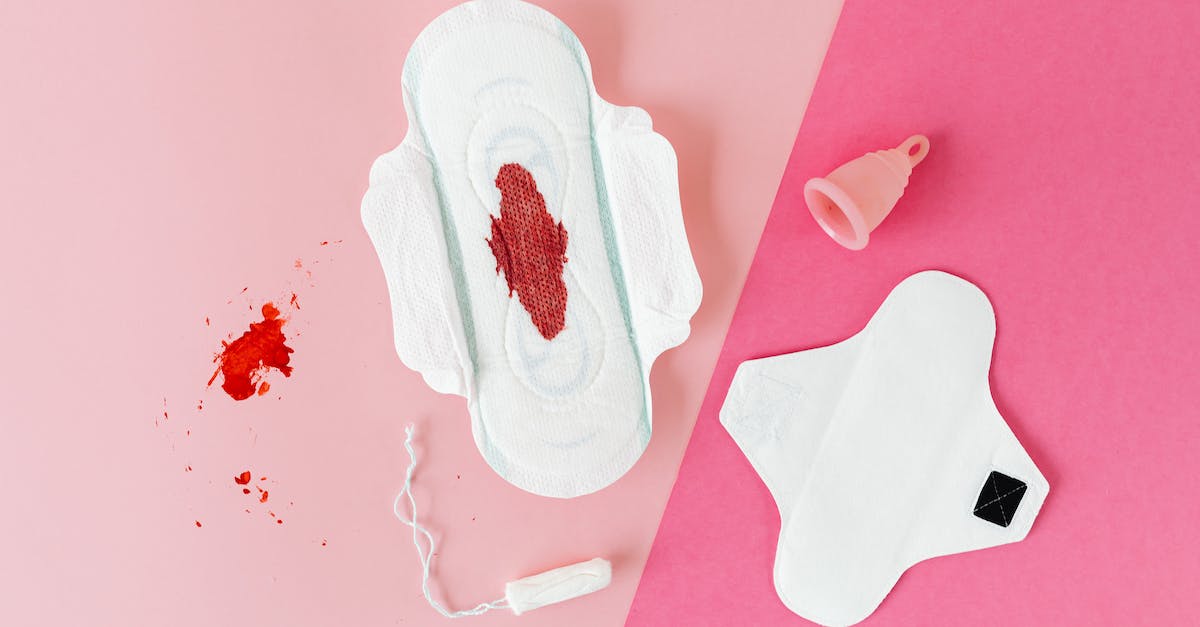Are you tired of using traditional tampons and looking for safer and more environmentally friendly alternatives? Well, you’ve come to the right place! In this article, we’ll explore a variety of tampon alternatives that are not only safe and comfortable but also better for the environment. So, if you’re curious about trying something new or simply want to make a positive impact on your body and the planet, keep reading!
Contents
4 Best Tampon Alternatives To Use

If you’re looking for safer, more comfortable, and environmentally friendly alternatives to traditional tampons, there are several options to consider. These tampon alternatives offer a comfortable fit, are reusable, and made from medical-grade materials, reducing the risk of exposure to harmful chemicals. Let’s explore some of the popular tampon alternatives available:
1. Menstrual Cups
Menstrual cups have gained popularity in recent years as a reliable and eco-friendly alternative to tampons. Made of medical-grade silicone, rubber, latex, or elastomer, these bell-shaped devices collect menstrual blood flow when placed high in the vagina against the cervix.
How Do Menstrual Cups Work?
Menstrual cups are inserted into the vagina and can be worn for up to 12 hours depending on your flow. They should be emptied and cleaned every few hours. Menstrual cups are similarly or less prone to leakage than tampons or pads. Moreover, they can last for up to 10 years if properly maintained, making them a cost-effective choice.
2. Period Underwear
Another popular tampon alternative is period underwear. These specially designed undergarments have an absorbent layer that holds menstrual blood, eliminating the need for tampons or pads.
How Do Period Underwear Work?
Period underwear works by preventing leakage and keeping you dry and comfortable. They are made with layers of moisture-wicking fabric and leak-proof technology, offering protection throughout your menstrual cycle. After use, simply wash the period underwear and reuse them. Period underwear is available in various styles, providing options for different flow levels.
3. Organic Cotton Pads
For those who prefer a more familiar option, organic cotton pads are a great alternative to traditional tampons. Made with 100% organic cotton, these pads are free of synthetic materials, fragrances, and harmful chemicals.
Benefits of Organic Cotton Pads
Organic cotton pads are gentle on the skin and allow for breathability, reducing the risk of irritation and allergies. They are also biodegradable and do not contribute to the plastic waste often associated with traditional tampons. Organic cotton pads are available in different sizes and absorbencies to suit your needs.
4. Sea Sponge
Sea sponges may be an unconventional choice, but they have been used as tampon alternatives for centuries. These soft, natural sponges are harvested from the ocean and can be trimmed to fit comfortably inside the vagina.
How Do Sea Sponges Work?
Sea sponges absorb menstrual blood just like tampons. They can be rinsed, cleaned, and reused throughout your cycle. It’s important to note that sea sponges should be properly sanitized between uses to maintain hygiene.
Why Consider Tampon Alternatives?

When it comes to managing your menstrual flow, tampon alternatives can offer several benefits that you may want to consider. Here are a few advantages of using tampon alternatives:
- Safer and more comfortable: Tampon alternatives, such as menstrual cups or discs, are made from medical-grade materials like silicone or polymers. This means they are generally safe to use and may reduce the risk of exposure to chemicals sometimes found in traditional tampons. Plus, these alternatives are designed to provide a comfortable fit, allowing you to go about your day without any discomfort.
- Environmental-friendly: Traditional tampons and pads contribute to the increasing plastic waste and pollution. On the other hand, many tampon alternatives are reusable and sustainable. For example, menstrual cups can be washed and reused for several years, significantly reducing your environmental footprint. By choosing tampon alternatives, you can make a positive impact on the environment.
- Cost-effective: Did you know that the average woman spends a significant amount of money on menstrual products over her lifetime? Tampon alternatives, like reusable cloth pads or menstrual cups, can help you save money in the long run. While the initial cost of some alternatives may be higher, their long-term reusability makes them a more cost-effective option.
Environmental Impact of Tampons

Aside from the potential health benefits, considering tampon alternatives can also help address the environmental impact of traditional tampons. Here are a few facts to consider:
- Plastic waste: Most traditional tampons and pads contain plastic components that contribute to plastic pollution. These plastic-based products can take hundreds of years to decompose in landfills. By switching to tampon alternatives, you can significantly reduce your plastic waste and lessen your environmental impact.
- Microplastic contamination: Conventional period products contribute to the problem of microplastic contamination in water systems. Microplastics are tiny particles that are harmful to aquatic life and can even end up in our food chain. By choosing tampon alternatives that are free from synthetic materials, you can help reduce the amount of microplastics entering our ecosystems.
- Carbon footprint: The production, packaging, and disposal of traditional tampons contribute to carbon dioxide emissions. In fact, one year’s worth of feminine hygiene products can generate a significant amount of CO2 emissions. By switching to reusable tampon alternatives, such as menstrual cups or cloth pads, you can lower your carbon footprint and help combat climate change.
Frequently Asked Questions
What can I use if I don’t have tampons?
Menstrual cups are a popular alternative to tampons. They are silicone cups inserted into the vagina to collect menstrual blood for 6-12 hours. They can be used as a long-lasting and environmentally friendly option.
Can I make tampons at home?
It is not recommended to make your own tampons at home due to the risk of infection. It is best to use store-bought tampons that are regulated and designed for safe use.
I am a medical student with experience and interest in Women’s health and well-being.